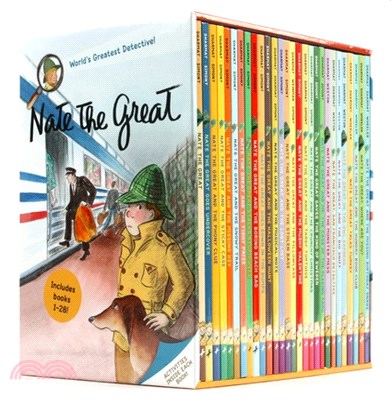Introduction To Tribology
商品資訊
ISBN13:9780471158936
出版社:John Wiley & Sons Inc
作者:Bhushan
出版日:2002/07/18
裝訂/頁數:精裝/752頁
定價
:NT$ 7256 元優惠價
:90 折 6530 元
若需訂購本書,請電洽客服 02-25006600[分機130、131]。
商品簡介
作者簡介
目次
相關商品
商品簡介
Coverage of critical cutting-edge topics including MEMS, nanotribology and magnetic surface storage technologies.
* Integrates the knowledge of tribology from mechanical engineering, mechanics, and materials science points of view.
* Covers both the underlying theory and the current applications of tribology to industry.
* Integrates the knowledge of tribology from mechanical engineering, mechanics, and materials science points of view.
* Covers both the underlying theory and the current applications of tribology to industry.
作者簡介
BHARAT BHUSHAN, PhD, DSc (Hon.), is an Ohio Eminent Scholar and Howard D. Winbigler Professor at The Ohio State University in Columbus, where he also serves as Director of the Nanotribology Laboratory for Information Storage and MEMS/NEMS (NLIM).
目次
Foreword.
Preface.
1 Introduction.
1.1 De.nition and History of Tribology.
1.2 Industrial Signi.cance of Tribology.
1.3 Origins and Signi.cance of Micro/Nanotribology.
1.4 Organization of the Book.
References.
2 Solid Surface Characterization.
2.1 The Nature of Surfaces.
2.2 Physico-Chemical Characteristics of Surface Layers.
2.3 Analysis of Surface Roughness.
2.4 Measurement of Surface Roughness.
2.5 Closure.
References.
Suggested Reading.
3 Contact between Solid Surfaces.
3.1 Introduction.
3.2 Analysis of the Contacts.
3.3 Measurement of the Real Area of Contact.
3.4 Closure.
References.
Suggested Reading.
4 Adhesion.
4.1 Introduction.
4.2 Solid-Solid Contact.
4.3 Liquid-Mediated Contact.
4.4 Closure.
References.
Suggested Reading.
5 Friction.
5.1 Introduction.
5.2 Solid-Solid Contact.
5.3 Liquid-Mediated Contact.
5.4 Friction of Materials.
5.5 Closure.
References.
Suggested Reading.
6 Interface Temperature of Sliding Surfaces.
6.1 Introduction.
6.2 Thermal Analysis.
6.3 Interface Temperature Measurements.
6.4 Closure.
References.
7 Wear.
7.1 Introduction.
7.2 Types of Wear Mechanisms.
7.3 Types of Particles Present in Wear Debris.
7.4 Wear of Materials.
7.5 Closure.
References.
Suggested Reading.
8 Fluid Film Lubrication.
8.1 Introduction.
8.2 Regimes of Fluid Film Lubrication.
8.3 Viscous Flow and Reynolds Equation.
8.4 Hydrostatic Lubrication.
8.5 Hydrodynamic Lubrication.
8.6 Elastohydrodynamic Lubrication.
8.7 Closure.
References.
Suggested Reading.
9 Boundary Lubrication and Lubricants.
9.1 Introduction.
9.2 Boundary Lubrication.
9.3 Liquid Lubricants.
9.4 Greases.
9.5 Closure.
References.
Suggested Reading.
10 Micro/Nanotribology.
10.1 Introduction.
10.2 SFA Studies.
10.3 AFM/FFM.
10.4 Atomic-Scale Simulations.
10.5 Closure.
References.
Suggested Reading.
11 Friction and Wear Screening Test Methods.
11.1 Introduction.
11.2 Design Methodology.
11.3 Typical Test Geometries.
11.4 Closure.
References.
Suggested Reading.
12Tribological Components and Applications.
12.1 Introduction.
12.2 Common Tribological Components.
12.3 Microcomponents.
12.4 Material Processing.
12.5 Industrial Applications.
12.6 Closure.
References.
Suggested Reading.
Problems.
Appendix Units, Conversions, and Useful Relations.
A.1 Fundamental Constants.
A.2 Conversion of Units.
A.3 Useful Relations.
Index.
Preface.
1 Introduction.
1.1 De.nition and History of Tribology.
1.2 Industrial Signi.cance of Tribology.
1.3 Origins and Signi.cance of Micro/Nanotribology.
1.4 Organization of the Book.
References.
2 Solid Surface Characterization.
2.1 The Nature of Surfaces.
2.2 Physico-Chemical Characteristics of Surface Layers.
2.3 Analysis of Surface Roughness.
2.4 Measurement of Surface Roughness.
2.5 Closure.
References.
Suggested Reading.
3 Contact between Solid Surfaces.
3.1 Introduction.
3.2 Analysis of the Contacts.
3.3 Measurement of the Real Area of Contact.
3.4 Closure.
References.
Suggested Reading.
4 Adhesion.
4.1 Introduction.
4.2 Solid-Solid Contact.
4.3 Liquid-Mediated Contact.
4.4 Closure.
References.
Suggested Reading.
5 Friction.
5.1 Introduction.
5.2 Solid-Solid Contact.
5.3 Liquid-Mediated Contact.
5.4 Friction of Materials.
5.5 Closure.
References.
Suggested Reading.
6 Interface Temperature of Sliding Surfaces.
6.1 Introduction.
6.2 Thermal Analysis.
6.3 Interface Temperature Measurements.
6.4 Closure.
References.
7 Wear.
7.1 Introduction.
7.2 Types of Wear Mechanisms.
7.3 Types of Particles Present in Wear Debris.
7.4 Wear of Materials.
7.5 Closure.
References.
Suggested Reading.
8 Fluid Film Lubrication.
8.1 Introduction.
8.2 Regimes of Fluid Film Lubrication.
8.3 Viscous Flow and Reynolds Equation.
8.4 Hydrostatic Lubrication.
8.5 Hydrodynamic Lubrication.
8.6 Elastohydrodynamic Lubrication.
8.7 Closure.
References.
Suggested Reading.
9 Boundary Lubrication and Lubricants.
9.1 Introduction.
9.2 Boundary Lubrication.
9.3 Liquid Lubricants.
9.4 Greases.
9.5 Closure.
References.
Suggested Reading.
10 Micro/Nanotribology.
10.1 Introduction.
10.2 SFA Studies.
10.3 AFM/FFM.
10.4 Atomic-Scale Simulations.
10.5 Closure.
References.
Suggested Reading.
11 Friction and Wear Screening Test Methods.
11.1 Introduction.
11.2 Design Methodology.
11.3 Typical Test Geometries.
11.4 Closure.
References.
Suggested Reading.
12Tribological Components and Applications.
12.1 Introduction.
12.2 Common Tribological Components.
12.3 Microcomponents.
12.4 Material Processing.
12.5 Industrial Applications.
12.6 Closure.
References.
Suggested Reading.
Problems.
Appendix Units, Conversions, and Useful Relations.
A.1 Fundamental Constants.
A.2 Conversion of Units.
A.3 Useful Relations.
Index.
主題書展
更多
主題書展
更多書展今日66折
您曾經瀏覽過的商品
購物須知
外文書商品之書封,為出版社提供之樣本。實際出貨商品,以出版社所提供之現有版本為主。部份書籍,因出版社供應狀況特殊,匯率將依實際狀況做調整。
無庫存之商品,在您完成訂單程序之後,將以空運的方式為你下單調貨。為了縮短等待的時間,建議您將外文書與其他商品分開下單,以獲得最快的取貨速度,平均調貨時間為1~2個月。
為了保護您的權益,「三民網路書店」提供會員七日商品鑑賞期(收到商品為起始日)。
若要辦理退貨,請在商品鑑賞期內寄回,且商品必須是全新狀態與完整包裝(商品、附件、發票、隨貨贈品等)否則恕不接受退貨。
























